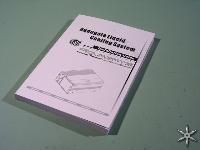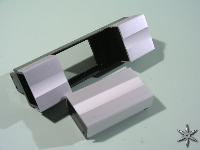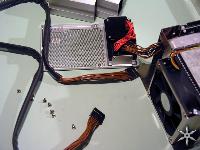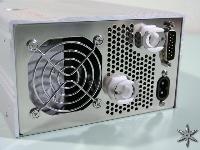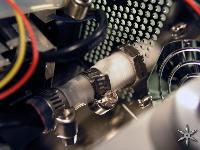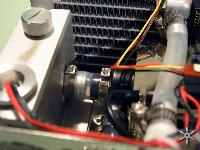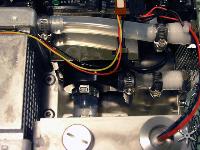After careful consideration I have decided to transfer all hardware review activities to a new domain. I purchased Hardwareasylum.com in 2012 and have been working hard to build a new and improved Ninjalane on that domain. If you are reading this you have reached one of the archived articles, news, projects and/or reviews that were left behind during the site migration.
Please update your bookmarks and be sure to visit the new and improved Ninjalane at Hardwareasylum.com
CoolerMaster Aquagate Water Cooler Review
Author: Dennis Garcia
Published: Friday, August 27, 2004
Aquagate Explored
The Aquagate comes with its own cooling fluid -- there is just enough to fill the system once and have about 100mL left over. The liquid is blue and somewhat resembles a very dark version of window washer fluid.
One thing that makes watercooling better for everyone is when the watercooler can be controlled like any other device in your system. Shown above is the Cooler Master relay for controlling the Aquagate. You can see two notches towards the top of the expansion plate. These are designed so that you can pass the cooling hoses into the case without needing to cut any holes. The relay also has connections for the external thermal probe and auto shut off feature.
Multi-language manuals really add to the "thunk" factor of the included documentation, but don't be fooled -- the English section is only about 38 pages in length.
When installing the Aquagate internally, it may become difficult to read and adjust the LED display. To solve this problem, Cooler Master has provided this blank 5.25 bay cover designed to hold the LED display. The front panel unit wasn't removed for these photos, but it does show the back of the LED display and the included extension cable.
The back side of the Aquagate is pretty straightforward. There are two quick connect ports (water in, water out), a power plug, and an interface port. It should be noted that the quick connects are very unique in that they will not leak. An internal valve stops the flow of water when the barbs are removed and self seals when they are installed. The same is true for the barbs (in reverse  ).
).
Always being one who wants to know how something works, I've taken a few shots of the internals of the Aquagate. The components are fairly simple; pump is towards the top, radiator to the left and reservoir at the bottom of the photo. The radiator is rather small, but it contains a fair number of water channels to increase cooling efficiency.

